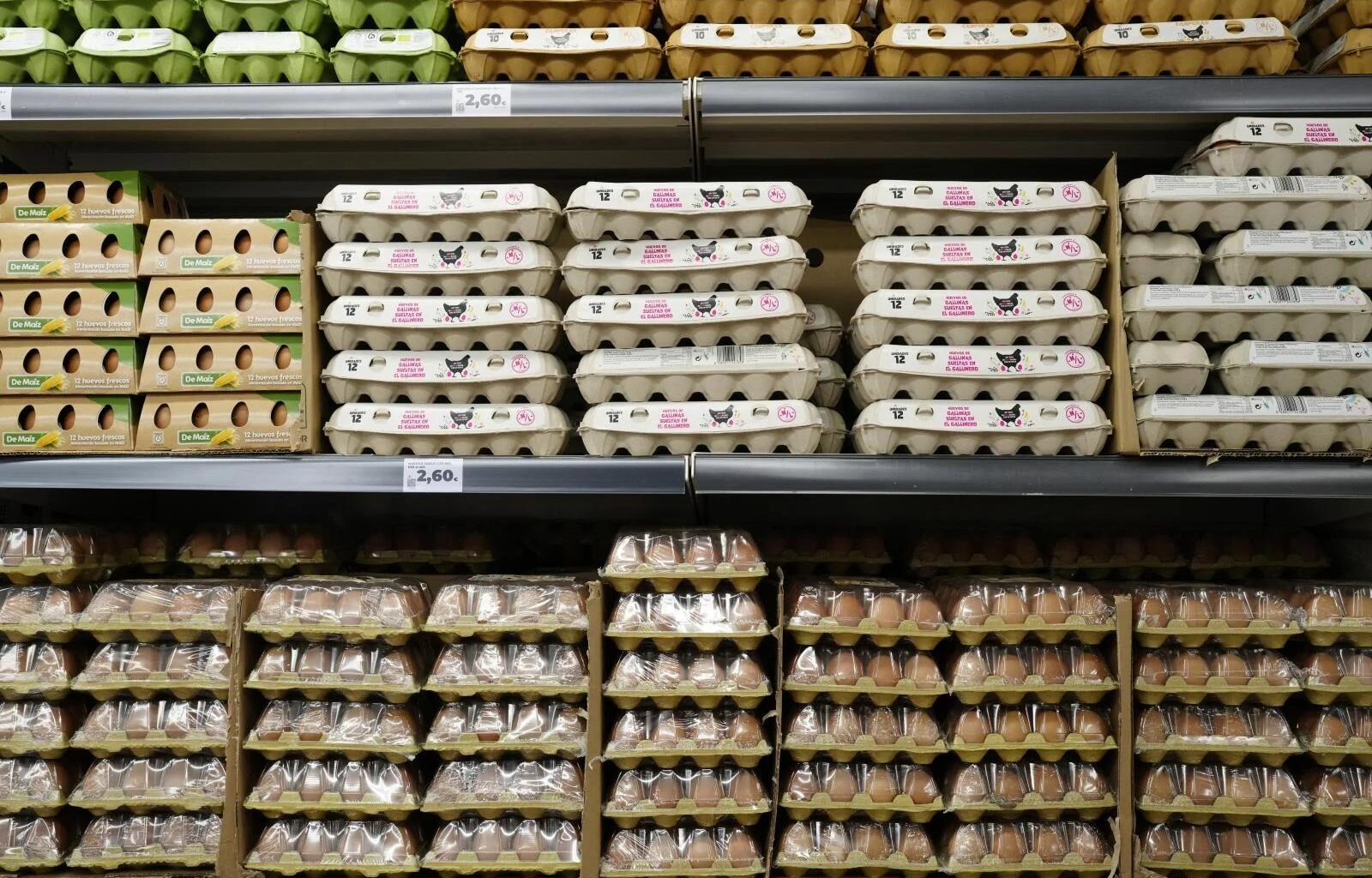Tuesday, 11 November 2025, 19:10
The Spanish Ministry of Agriculture’s ban on the raising of poultry outdoors has been in force since Monday, 10 November. It particularly affects Andalucía, Castilla y León and Catalonia, as those are the regions where the highest number of outbreaks has been detected in recent months. A total of 1,199 municipalities in mainland Spain are impacted by the measure. The government is urging increased vigilance in the rest of the country.
The spread of the bird flu has claimed the lives of more than 2.5 million birds in Spain in fewer than four months. The H5N1 virus, which started with the US and then reached Europe, now threatens the Spanish primary sector after more than two and a half years without the presence of the pathogen. The outbreaks are spreading across Europe, albeit at a slower pace than in the US. As a result, the price of eggs has significantly risen in the past year, with a 31% average increase, according to data from consumers’ organisation Facua. The national institute of statistics puts the rate of increase lower, at 15.9%. The minister of agriculture has asked producers and distributors not to “speculate with prices”.

The sector attributes this rise (an average increase of one euro in just one week) to the control measures implemented at the beginning of the year, the increase in exports and the fear of a possible shortage. However, Spain’s main poultry producers rule out any risk of shortages. According to the Ministry of Agriculture, the total number of laying hens in Spain was around 47.8 million in 2024. As for broilers, used for their meat, annual production was around 600 million birds. The short life cycle of these birds (between six and eight weeks) means their population changes quickly. Taking into account that around 2.65 million birds have been culled this year due to the disease, the impact, for now, does not pose a significant threat to the country’s supply.
The situation in the US has been much worse. Earlier this year, the country’s agricultural department reported that the bird flu has “created an imbalance in the domestic supply of fresh eggs, with shortages in some areas and barely sufficient availability in others”. According to estimates, there were about seven million cases of HPAI in November 2024; more than 18 million in December; and about 23 million in January this year.
Inflation
Another Spanish consumers’ organisation, the OCU, has reported that the price of M-size eggs has increased by 137% since 2021, when the current inflation crisis started.
The growing demand for eggs from Spain in other countries has contributed to this rise in prices. The consumer price index (CPI) for September, shows a year-on-year increase of 17.9%, making eggs the second most expensive food product. So far this year, they have also been the food product with the highest increase in price, with a rise of 15.9%.
According to the Ocu price observatory, a pack of 12 M eggs has risen from 2.14 euros in February to 3.14 euros in October. A similar increase can be seen in L-size eggs, whose price has risen from 2.33 to 3.25 euros. Among the main causes are avian flu, intermediaries’ reluctance to reduce their margins and the rise in prices at origin.
The Ministry of Agriculture has already detected 14 outbreaks in the province of Valladolid, Huelva, Toledo, Badajoz, Guadalajara and Madrid
Agricultural sources confirm the phenomenon. On top of that, the price for the final consumer has grown even more. In January 2025, when the Ministry of Agriculture declared a high-risk level for avian flu and introduced the first preventive measures, a dozen M-size eggs were sold at 1.74 euros at origin and 2.40 euros in supermarkets, a difference of 38%. In October 2025, the price at origin reached 1.97 euros and at the point of sale 3.15 euros, 60% difference.
The virus, however, has not had the same impact on poultry meat. According to the national institute of statistics, the price of chicken has only increased by 3.6% year-on-year, a much more moderate rise. According to farmers, the bird flu has a greater impact on egg production, as it depends directly on laying hens, which are more exposed because they are kept outdoors.
Global crisis
The wave of infections that began in the second half of 2020 is considered the most severe ever recorded, with the outbreaks in Asia, Africa and Europe causing an unprecedented number of deaths among wild birds and poultry. In 2021, the virus spread to North America and reached South America in 2022, where it also started to spread to mammals.
Spain’s Ministry of Agriculture has already detected 14 outbreaks in the provinces of Valladolid, Huelva, Toledo, Badajoz, Guadalajara and Madrid. A total of 139 outbreaks have been detected in other European countries as a whole.
Faced with this crisis, the ministry has said that “it is necessary to maximise control to avoid contact between wild birds and breeding birds, laying hens and poultry”, which includes monitoring food and drink points.

